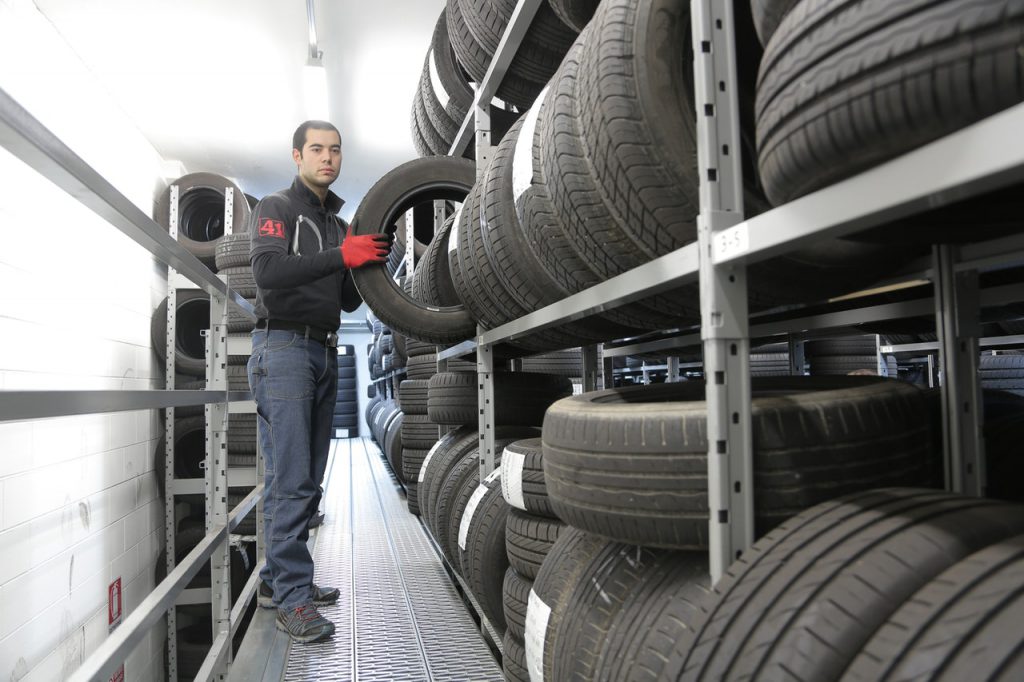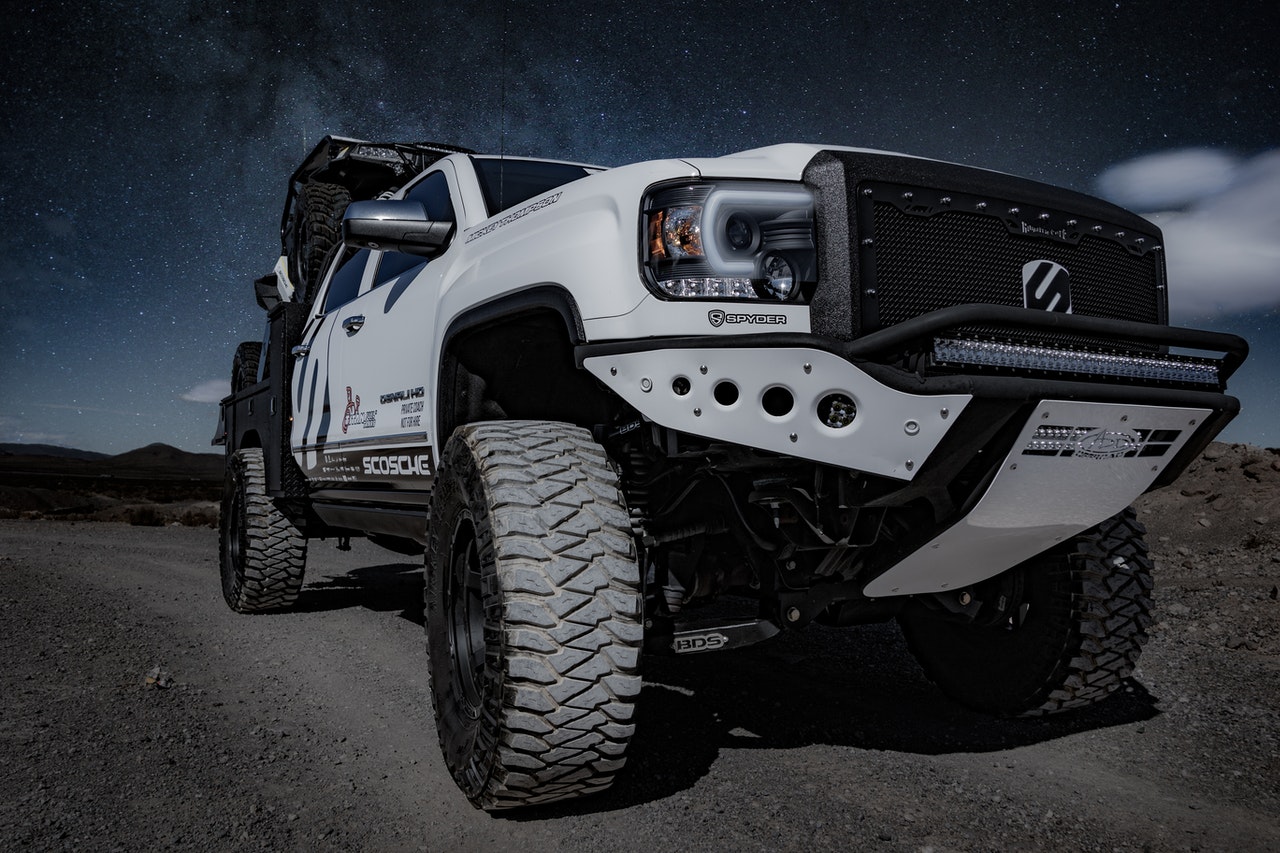Have you ever had cupped tires? If you had, then it is totally understandable since they can be very upsetting. They are not only dangerous but also amend the driving experience of the car. Typically, you can feel the bouncy and loss feeling from your own vehicle.
But, what causes tire cupping? This cupping of tires is typically due to worse wear, tear, and strain on the tire surface. You may feel that your vehicle becomes somewhat bouncy and a little out of control. So in case you come across one or more cupped tires in your vehicle, it’s time to schedule an appointment with the auto expert.
But before that, you should be aware of the potential reasons responsible for the tire cupping.
Contents
What Does Cupping Look Like?
Even though this is an unfamiliar term to various car owners, it is an issue that happens quite a lot. Tire cupping, also called tire scalloping, is an uneven wear pattern. This problem occurs due to the irregular motions of the wheel, up and down movement and bouncing are the examples. The main factor of this problem is the contact between the road and the tire, which scope rubber in spots.
And this problem is quite serious since it will badly affect your tires. Usually, the worn is around 3 to 4 inches in diameter. Along with that, car owners can hear the rumbling noise when they drive at high speed. Even if you can still drive the car, it is quite harsh on the journey, especially with slower speed.
What Causes Tire Cupping? – 5 Important Reasons to Know now!
Normally, we know that bent rim, worn suspension as well as imbalance tires are the common reasons for this issue. However, today we will provide more factors causing tire cupping. In fact, there are several different reasons that are accountable for the cupping of your vehicle’s tires. Let’s check out each one of them carefully:
Low-Quality Tires
One main reason liable for cupping is the use of low-quality tires. In fact, fake tires, cheap tires, poor quality tires,… from low quality tire brands – they all take responsibility for any minor bounce or vibration. Since these poor quality tires are devoid of proper strength, durability, and thickness that high-quality tires have. In short, they are thinner, which means the rubber compounds present in these cheap tires are not stress-resistant as well as temperature-resistant. They will soon be runout, imbalanced, then age and crack.

As a result, they are more prone to the damages like tire cupping.
Errant Suspension System
The next factors which causes tire cupping is the errant suspension system. This could be worn, bent shocks, loose or suspension car components.
So if you have high-quality tires and still you’re experiencing the problem of cupping, it may be due to a faulty suspension system. In normal cases, the suspension system of your vehicle allows it to drive smoothly. However, any part of the system wears out, it becomes baggy, letting the wheel bounce up-and-down with force and regularity. Consequently, it can result in cupping. The problem could be struts or bad shocks. To be more precise, it will tear out the tread of the tire, as well as wear it down in specific spots much quicker than others. As a consequence, the car loses contact with the road when moving, and makes “cups” that seem like craters and dips in the rubber. If car owners usually ride on speed bumps or roads with many potholes, the matter will become worse since it is harder to find the issue.
On the other hand, the shock absorbers might also be the factor. In the best situation, the suspension system along with shock absorbers work together to make the car movement as smooth as possible. Yet if either one of these two is worn or bent, the wheel will bounce and it might cause cupped tires.
If the issue is from the shock absorbers, cả owners can just change it. For every 50,000-60,000 miles and struts every 60,000-90,000 miles, car owners can replace them for safety. Along with that, suspension bushings can also be changed even though they have a longer lifespan, around 100,000-150,000 miles.So in order to avoid cupped tires, make sure you inspect the parts at least every 12,000 miles or once a year.
Apart from shock absorbers, there are many more parts causing cupped tires. Even though the issues with these parts aren’t as often, it is worth keeping in mind. Along with that, car owners should be sure to check wheel bearings, springs, ball joints and bushings. In short, any part that connects the wheel to the rest of the vehicle may be the culprit.
SEE MORE:
- When you your Vehicle Requires Tire Alignment?
- Bad Wheel Alignment – Important Signs that indicate it!
3. Crooked Wheels
Another underlying cause of the tire cupping is crooked wheels, also known as misaligned wheels. The alignment has three angles: Camber, toe and caster, and if your wheels are not present at the ideal angle, the chances are they’ll be subjected to severe tears and wear. And, it will ultimately result in cupping tires, back tire cupping to be more specific. If the front and rear tires are not parallel to each other, back tire cupping might happen.
That’s why you should ride your vehicle wheels every 6-12 months so as to avoid such troubles.
4. Inadequate Inflation in Tires
If the tires of your car do not contain enough air pressure, it’s true that they’ll be cupped and damaged. In other words, tire runout is one of the common causes of tire cupping. There are two types of tire runout: Lateral and radial. On one hand, side-to-side flaw can cause wobbling to your tire. On the other hand, radial is the imperfection between low and high spots, which also causes the same issue.
Both of these insufficient inflation often weakens your tires and thereby makes them vulnerable to rocks, potholes, and other fragments or aberrations in the road. Certain car maintenance tips will tell the ideal air pressure your tires should have.
5. Tire Imbalance
Last but not least, the imbalance of the tire is the last factor making tire cupping. If car owners can feel the shaking when holding the steering wheel or vibration through the seat, this might be the case. Usually when you reach around 45 mph, And unlike other factors, there are various ways causing an imbalance problem: Mud, snow, dirt, debris… They could build up on the inside wheel’s surface.
For that reason, drivers need to check the balance of the tire every 3000 to 6000 miles. Not to mention, you can improve the life of the tire for 15% more just by balancing the tire.
A tire is out of balance when the weight across its circumference is irregular. The main consequence is vibration at 45 mph, which increases with speed. The wheel bounces, allowing the tire to lose the grip of the road for short periods of time. With every rotation, such bouncing creates scoops of rubber on the tire, causing cupped tires. This particular type of wear is also called patch wear, as the scoops may not be as regular as those caused by a failing suspension.
Is It Possible To Prevent Tire Cupping?
Detect the Tire Cupping
This is the famous question: Is it possible to repair tire cupping? And the answer is yes, we can. If it is not too serious, we can totally repair the issue. Yet we need to detect it in time to save the suspension as well as the tires. Car owners can also improve safety and comfort. And there are many ways for car owners to identify cupped tires, therefore repair the issue. We will show you how.
The Vibration
This is the first and most important factor: the vibration. If car owners can spot any wobbly feeling or vibration when driving on a road with many obstacles like potholes, there might be tire cupping.
The Leaning
The next symptom is the leaning from your car. When turning, if the car leans too much on one side, that means the tires need to be balanced. Another way to test it is to let the car slow down without braking. If it is slowing down but also leaning to one side of the road, that means you are having an imbalance tire.
The Bouncing Motions
Also, if your car has any bouncing motions while you are pressing the car’s hood down, it is normal. However, when you stop putting pressure and the bounce is still there, that might be the clue. To be more specific, that means the struts or suspension are worn, bent or loose.
If you cannot see the problem visually, we recommend running your hands across the tread areas to inspect. Any wavy surface could be a sign of tire cupping.
How to Prevent Tire Cupping?
Let’s assume that you know how to detect the tire cupping, so how can we prevent it before it happens? The suspension system is the first and most crucial car part to look at. Follow the guidelines of the service provider in order to keep it working normally.
Another way to prevent this issue is to pay attention to the bouncing motions. If your car has the problem more than usual, inspect it sooner than scheduled.
Along with that, the tire quality is also essential. Spending a good amount of money on tires is never a bad option since they can last for years. Also, car owners also should check if the tires are flat each month. The tread of the tire is another part to take a look at to spot any strange wear and tear sign.

If you spot that the tires are cupping, bring it to the local mechanics store immediately.
Also, take some other preventive measures in order to stay away from the situation of tire cupping. Some of which includes:
- Change faulty or worn out suspension parts like ball joints, CVC joints, wheel bearings, struts etc.
- Regular check on your tire pressure by using best tire pressure monitoring system to keep your tire always in good shape, good condition
- Consult the auto expert in case you notice any cupped tires in your car.
Conclusion
So, now you might get a clear answer to your question – what causes tire cupping? Don’t take this issue lightly as it can cause severe damage if not treated in time. Feel free to contact a mechanic before your car goes completely out of control.



